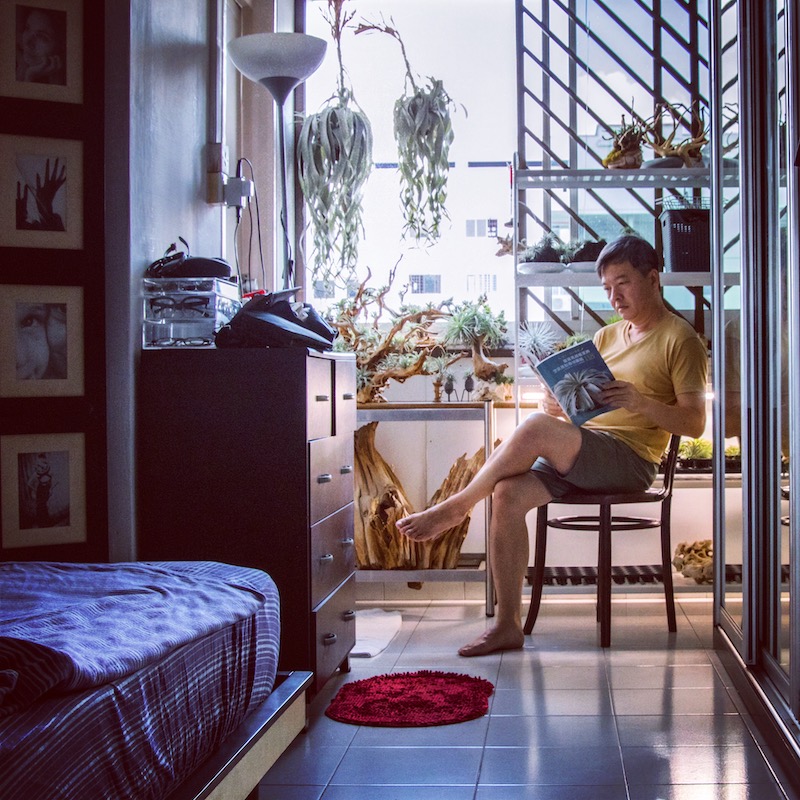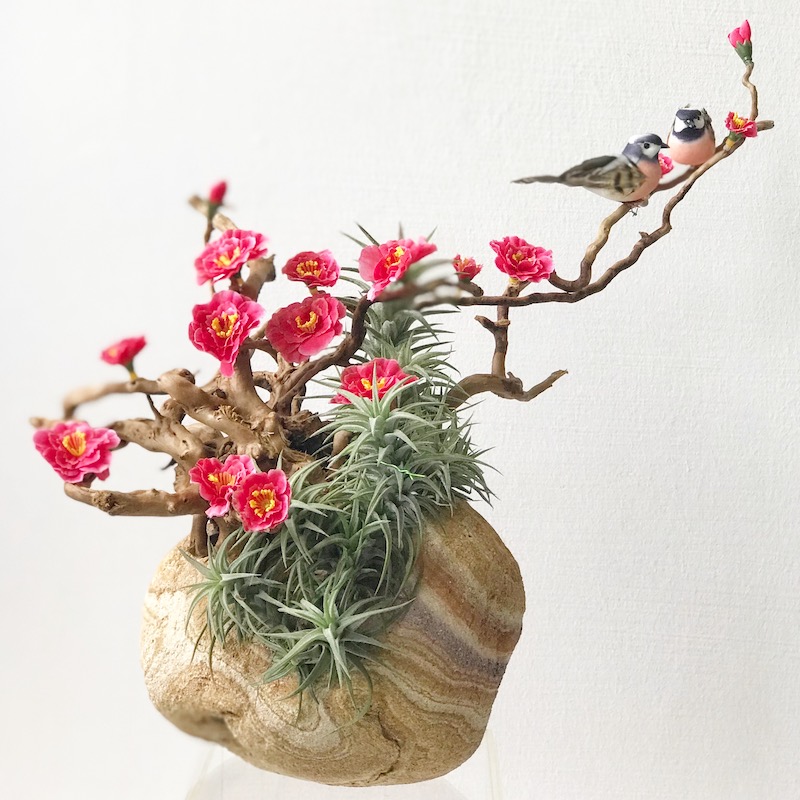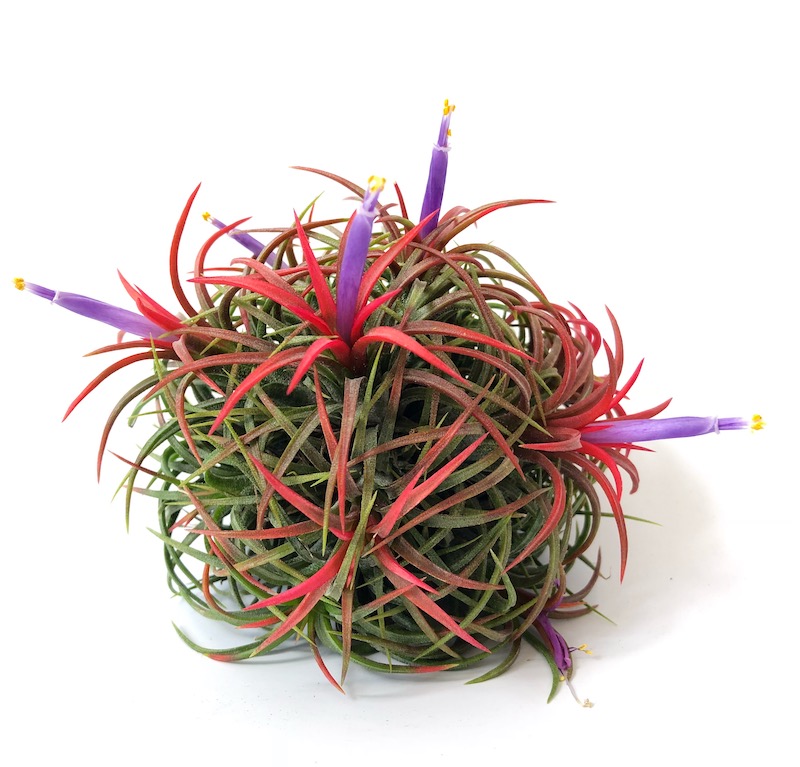Loving air plants
This air plant collector shares how easy it is to grow air plants in your home.
BY: Daniel Goh
I own over 200 species and hybrids of air plants and I am fascinated by these plants, which are also known as tillandsias. These amazing plants belong to the great family of bromeliads which boasts over 650 species. Did you know that a famous member that belongs to this plant family is the delicious pineapple?
Air plants occupy territories from the southern part of the US through Mexico, Central America, and even to the southern end of Argentina. They can grow at low altitudes of a few metres, up to altitudes of 3,500 metres. They have adapted and evolved in these varied climatic conditions over millions of years.
While some varieties can be grown in soil, most prefer to be grown as epiphytes. This simply means that these plants can grow on another host, for example, a rock or tree, and use the host mainly for support.
One of the most interesting things about air plants is that their leaves have special cells called trichomes, which takes in moisture and nutrients from the atmosphere. These small hairs on the leaves also help the plants to reflect excess ultraviolet light. Hence the major differentiating factor between two types of air plants is the amount of trichomes, as this can greatly affect both the look of the plant and how much light and water it may need.
These amazing plants although following the same genus, can look completely different with diverse forms, shapes and sizes. Some have very symmetrical leaf structures, while others display wavy leaves that look almost alien in form.
Here are some questions you might want to know to add to your new knowledge of air plants and to understand how I fell in love with these plants:
How much light do air plants require?
Air plants need bright but indirect light. It is ideal to place or hang them at the windows or balconies. Bright light or filtered sunlight is required to maintain a healthy plant. If sunlight is not possible, artificial light such as a fluorescent bulb can do the trick however, the growing condition may not be as good as natural light.
Can I place air plants indoors?
Yes, air plants can be placed indoors as long as the growing conditions are suitable (good lighting, watering and good air circulation). For an air-conditioned room, often the air-condition dries out the air and therefore, may require more watering.
How do I water air plants?
Air plants do need water to survive although they can survive long periods of drought. You can either mist air plants or soak them in clean water. Mist spray the air plant thoroughly to the point where the water starts to drip off. You can do this two to three times a week.
In terms of soaking them, you can submerge the plants in water for 15 minutes. This should happen only once every one or two weeks. Make sure to turn the plant in an upside-down position after watering to drip off the excess water from the centre of the plant and let the plant dry for at least four hours to prevent rotting. Air plants are great as if you are travelling say for two weeks as your air plant will still survive without water.
Do air plants need fertiliser?
Fertilising air plants is not necessary but it does help the plants grow faster, producing more offsets, or pups.For example, a balanced NPK formula can be used for air plants such as NPK 20-20-20. Use the fertiliser in 1/10 of the recommended dosage as over-fertilisation could result in fertiliser burn or pre-bloom.
How did you get interested in air plants in the beginning?
In 2015, I received an air plant as a gift from a friend. I was initially fascinated by how the plant did not need soil to grow and I gradually started buying more air plants to keep. I also read up about the plants and learned a great deal about them.
How have you brought air plants into your life?
I founded Living on Air in 2018, an entity that promotes green living. I firmly believe that cultivating air plants brings health benefits like purifying the air we breathe because they are known to remove harmful toxic from the atmosphere. Growing them also reduces everyday stress we face; they calm us down, thereby enhancing and improving our quality of life.
I enjoy being an artisan who styles and creates displays with air plants and natural materials, and I strive to showcase the uniqueness and beauty of these versatile plants. I sell some of my air plants for around S$50 to S$150 but some I can’t bear to part with just yet. I also give talks at horticulture events to share this passion of mine and to influence people to grow and love air plants as a hobby.
Where do you grow your over 200 species?
My plants are grown in a specialised nursery for air plants called an Airvatar. It is a sanctuary hidden away at Sungei Tengah to exhibit my air plant creations and I encourage people to come and see them. I want to share this with people because I feel that the air plant is an amazing plant which should be appreciated as it is such a good plant to grow in apartments or HDBs that we live in.
Daniel Goh, 50, is an air plant artisan and a senior financial consultant.
(** PHOTO CREDIT: Daniel Goh)




0 Comments